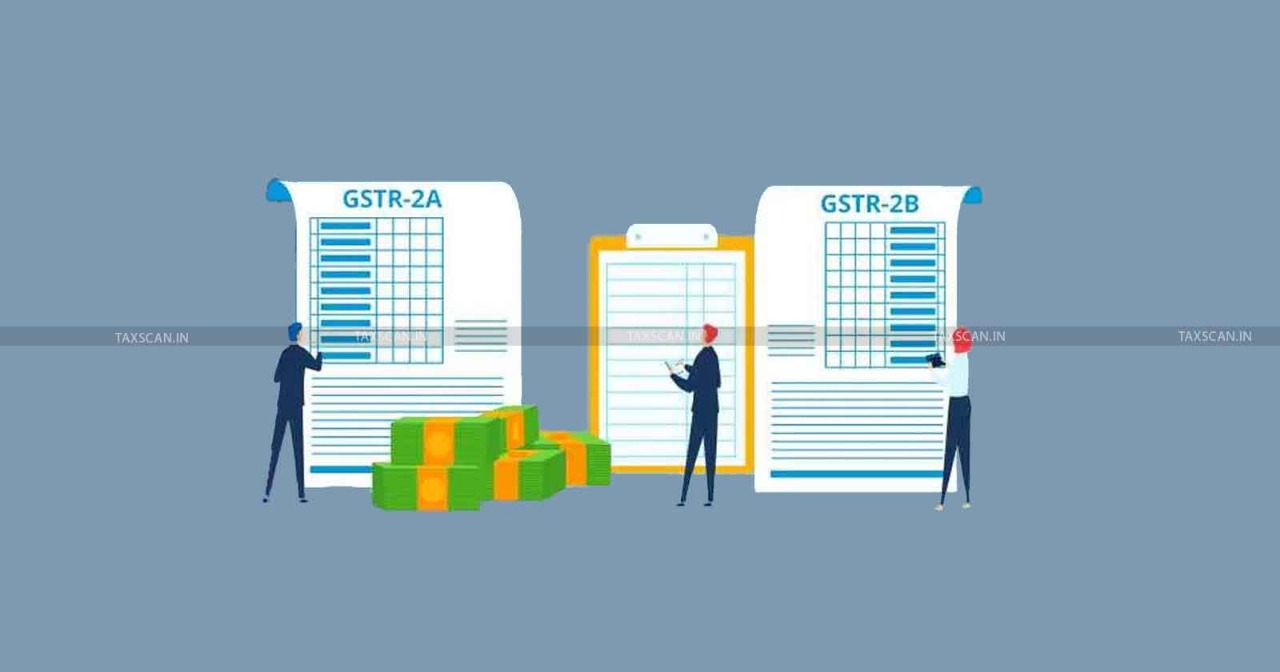GSTR-2A or GSTR-2B? Understand the Difference for Accurate ITC Claims
GSTR-2A is a dynamic statement for real-time ITC tracking, while GSTR-2B is a static monthly summary used for accurate and compliant ITC claims under GST

GSTR-2A – GSTR-2B – GSTR-2A or GSTR-2B – taxscan
GSTR-2A – GSTR-2B – GSTR-2A or GSTR-2B – taxscan
Under India's GST regime, claiming Input Tax Credit (ITC) correctly is important for managing working capital and ensuring compliance. To help businesses track eligible ITC, the government provides two key documents: GSTR-2A and GSTR-2B. Both are auto-generated by the GST portal, but they are not the same. They serve different purposes and are used at different stages of the ITC claim process.
Let’s break down the differences between the two.
What is GSTR-2A?
GSTR-2A is a real-time, dynamic statement that shows the purchases you’ve made from your suppliers, based on the data they upload in their returns (like GSTR-1).
Key Features:
- Updates Continuously: As soon as a supplier files or updates their return, GSTR-2A gets updated.
- Reflects Ongoing Activity: It changes whenever your suppliers make changes like uploading new invoices, correcting errors, or filing late.
- Good for Monitoring: You can use it to check if your suppliers are filing their GST returns properly and whether your invoices are being reported.
- Not Final: Since it keeps changing, it’s not suitable for final ITC claims.
Example:
If your supplier files their GSTR-1 today and includes your invoice, you will see that invoice in GSTR-2A almost immediately. If they later correct a mistake or file a missing return, GSTR-2A will also change to show the update.
Comprehensive Guide of Law and Procedure for Filing of Income Tax Appeals, Click Here
What is GSTR-2B?
GSTR-2B is a monthly, static statement. It shows a fixed list of invoices for which you can claim ITC for a particular month. It does not change after it is generated.
Key Features:
- Generated Once a Month: It is created around the 14th of the next month (for example, January data is available by February 14).
- Does Not Change: Once it is generated, it remains the same, giving you a stable view of eligible and ineligible ITC.
- Best for Final Claims: You should use this report when filing your GSTR-3B return, because it gives a clear, unchanging summary.
- Shows Eligible vs. Ineligible ITC: It highlights which ITC you are allowed to claim, helping avoid mistakes.
Example:
Even if your supplier files late, if they miss the cut-off date for GSTR-2B (usually the 11th or 13th of the next month), their invoice will not appear in that month’s GSTR-2B. You’ll need to wait for the next month’s GSTR-2B to claim ITC on that invoice.
So, What’s the Main Difference?
Let’s put it simply:
- GSTR-2A is like a live CCTV feed of your purchases, it changes all the time.
- GSTR-2B is like a photograph taken on a specific day every month, it gives a fixed, stable view.
Why Is This Important for Businesses?
1. For ITC Monitoring: Use GSTR-2A to check if your vendors are compliant and uploading invoices regularly. This helps in following up with non-compliant suppliers.
2. For Final ITC Claims: Use GSTR-2B when you actually want to claim ITC while filing your GSTR-3B return. It ensures you only claim ITC that is clearly allowed, and you avoid errors or rejections.
What About Rule 36(4)?
Rule 36(4) under CGST rules says that if some invoices are missing from GSTR-2B, you can still claim up to 5% of the eligible ITC shown in GSTR-2B as a provisional credit. This is helpful when a supplier delays their filing, but you still want to claim part of your credit.
Example: If your GSTR-2B shows Rs. 1,00,000 in eligible ITC, but your purchase records show Rs. 1,05,000, you can claim the full Rs. 1,05,000 because the extra Rs. 5,000 is within the 5% limit.
Comprehensive Guide of Law and Procedure for Filing of Income Tax Appeals, Click Here
How to Use Each Statement for ITC Reconciliation
Step-by-Step Reconciliation Approach:
- Download Both Statements: Log in to the GST Portal → Services → Returns → Download GSTR-2A and GSTR-2B.
- Compare with Purchase Register: Match invoices from GSTR-2A/2B with your internal records using tools like the Offline Matching Tool on the GST portal.
- Identify Discrepancies: Use GSTR-2A to spot missing invoices or supplier filing delays. GSTR-2B helps you confirm final ITC eligibility.
- Apply Rule 36(4): If an invoice appears in books but is missing from GSTR-2B, businesses can still claim up to 5% of the matched ITC as provisional, under CGST Rule 36(4).
- Align with GSTR-3B Filing: Base your final ITC claims in GSTR-3B on GSTR-2B to ensure compliance and avoid penalties.
Comparison Summary
| Aspect | GSTR-2A | GSTR-2B |
| Nature | Dynamic, updates continuously | Static, generated monthly |
| Update Frequency | Real-time, as suppliers file their returns | Once a month, on the 14th of the succeeding month |
| Purpose | Reflects inward supplies from supplier filings | Summarizes eligible/ineligible ITC for the month |
| Data Sources | GSTR-1, 5, 6, 7, 8 | GSTR-1, 5, 6, plus ICEGATE (imports) |
| ITC Classification | No classification of ITC | Clear bifurcation of eligible and ineligible ITC |
| Availability | Continuously available | Available after 14th of the next month |
| Amendments | Includes real-time supplier amendments | No changes post-generation |
| Use for ITC Claims | For ongoing reconciliation | For final ITC claims and GSTR-3B alignment |
| Rule 36(4) Compliance | Not preferred, may need manual checks | Preferred, supports 5% provisional ITC |
| Key Benefits | Real-time visibility, flagging supplier issues | Simplifies monthly reconciliation, compliance-ready |
Support our journalism by subscribing to Taxscan premium. Follow us on Telegram for quick updates


